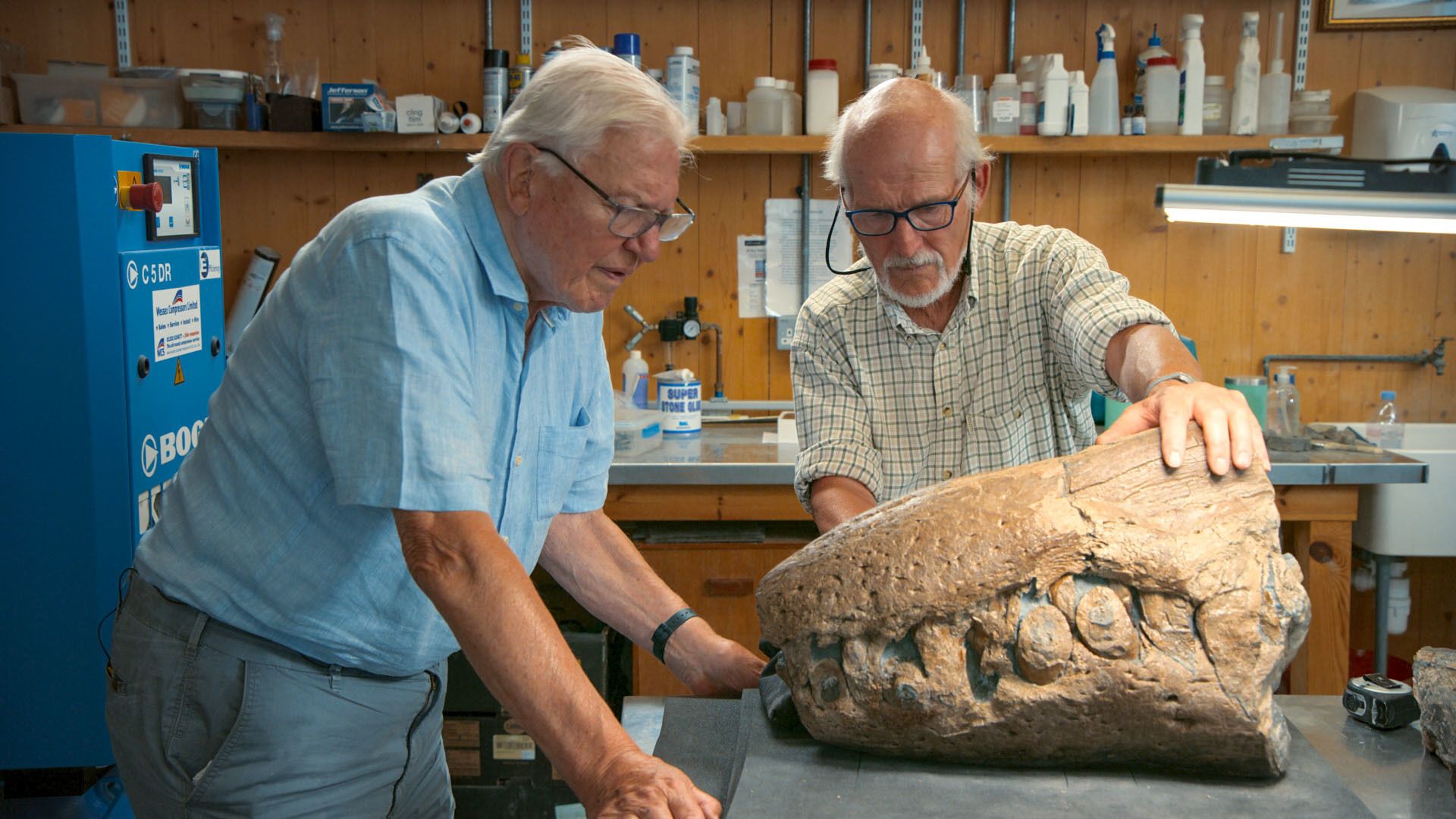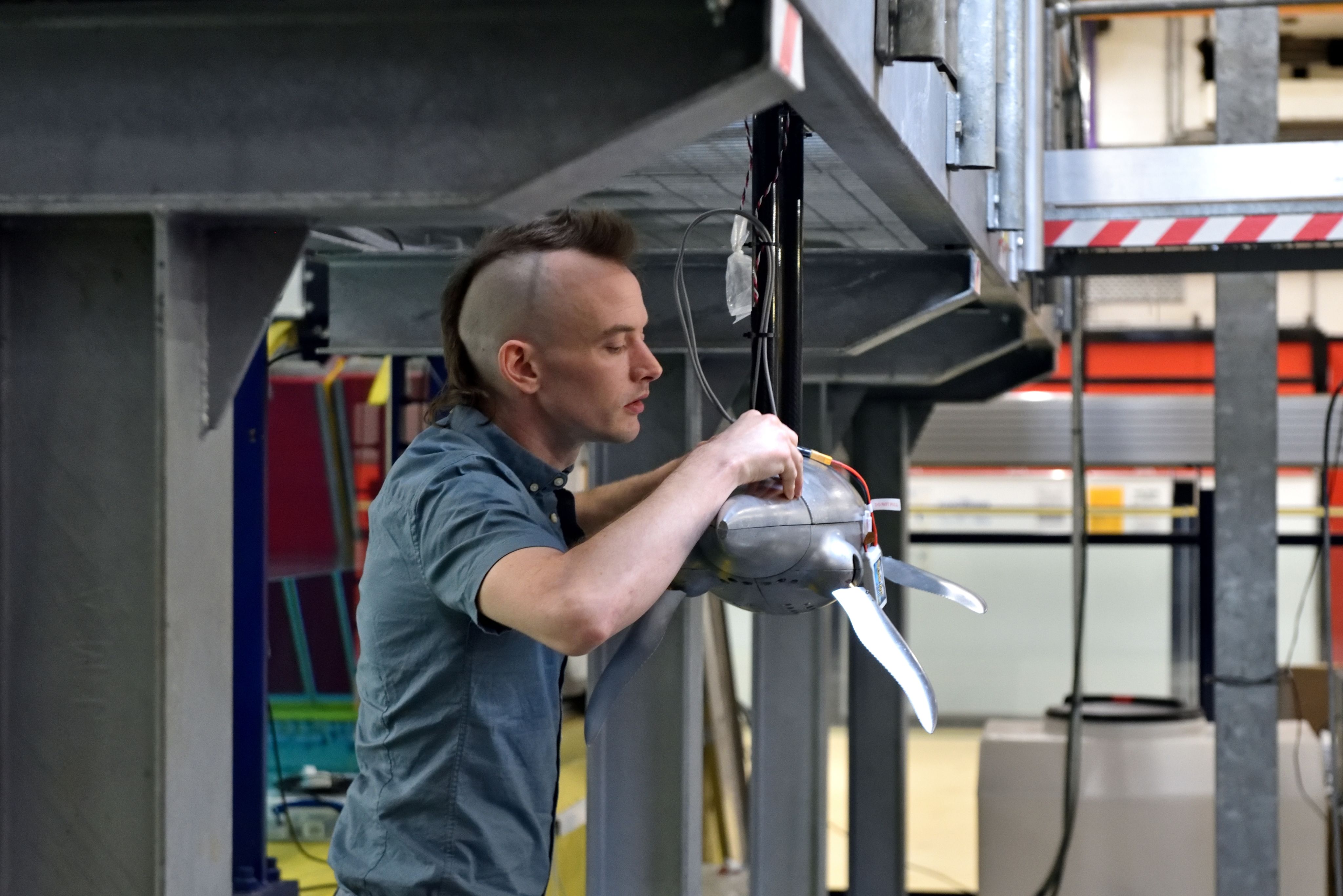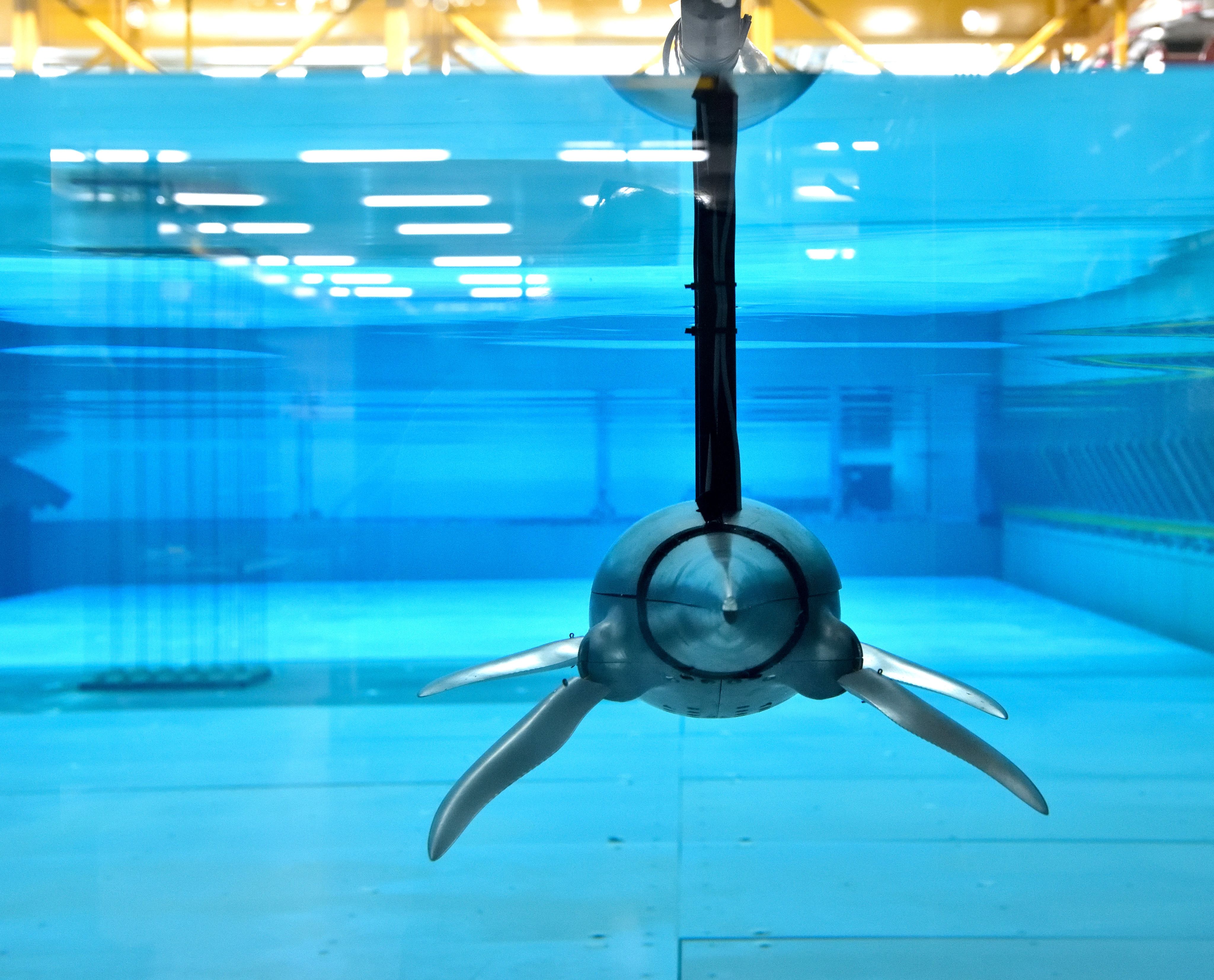Bringing Attenborough’s Giant Sea Monster to Life
Following the Dorset discovery of a complete pliosaur skull, an Imperial technician brought the prehistoric reptile to life to meet Sir David Attenborough.
By Caroline Brogan
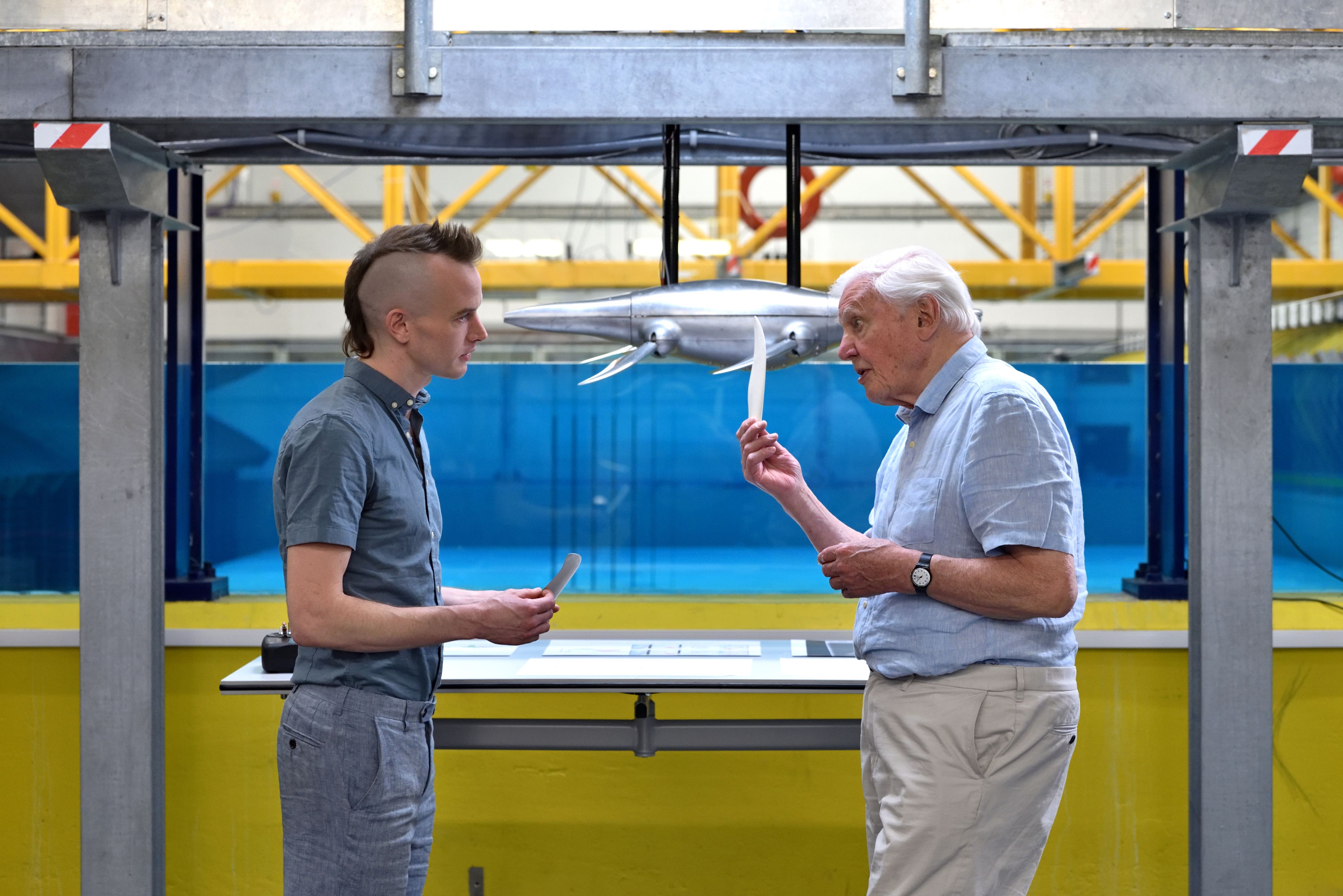
During the Mesozoic Era, dinosaurs ruled the Earth, but ferocious marine reptiles ruled the seas.
As prehistory’s oceanic apex predators, pliosaurs grew up to 12 metres long – about the length of a London bus.
With four powerful flippers for speed, pliosaurs sported a bite that generated 33,000 newtons of force – dwarfing the 16,000-newton bite of the saltwater crocodile, which has the most powerful bite of any animal alive today.
We humans can generate a measly 700 newtons.
Around 150 million years later, on a beach along Dorset’s Jurassic Coast, a fossil enthusiast happened upon a prehistoric snout.
It had fallen from a nearby cliff, where the rest of a two-metre-long pliosaur skull lay in wait.
The fossil is one of the biggest and most complete specimens of its type ever discovered, with 130 teeth and a head that’s longer than most humans are tall.



Luke Muscutt
Luke Muscutt

Luke Muscutt
Luke Muscutt

Jo Mieszkowski
Jo Mieszkowski
Meanwhile, around 120 miles north, a laboratory technician at Imperial College London carefully refined his designs for a remote-controlled, free-swimming robotic plesiosaur – the group of marine reptiles that includes pliosaurs.
His aim was to recreate the plesiosaur to study how its flippers worked together to propel these huge beasts through the water.
When the BBC got in touch, Flip consisted of line drawings in a sketchbook
He estimated that a working prototype – to be named Flip – would take two years to complete.
But Dr Luke Muscutt, who was building the robot as a passion project alongside his role as a laboratory technician in Imperial’s Structural Dynamics research group, would soon receive an offer that would massively expedite the process.

The entire skull fossil - © BBC Studios
The entire skull fossil - © BBC Studios
The skull's discovery in Dorset had sparked a search for innovative pliosaur research, and Dr Muscutt’s plans caught the attention of the BBC Natural History Unit. Its producers were keen to include the robot in their programme on the discovery, presented by Sir David Attenborough.
“When the BBC got in touch, Flip consisted of line drawings in a sketchbook,” Dr Muscutt explains.
Four months of intensive design and manufacturing later, Sir David interviewed Dr Muscutt on camera and took the reins of the plesiosaur, guiding it through the water as they watched from the walkway above.
Soon Sir David was standing next to me, guiding the robot that I built through its first ever swim trials.

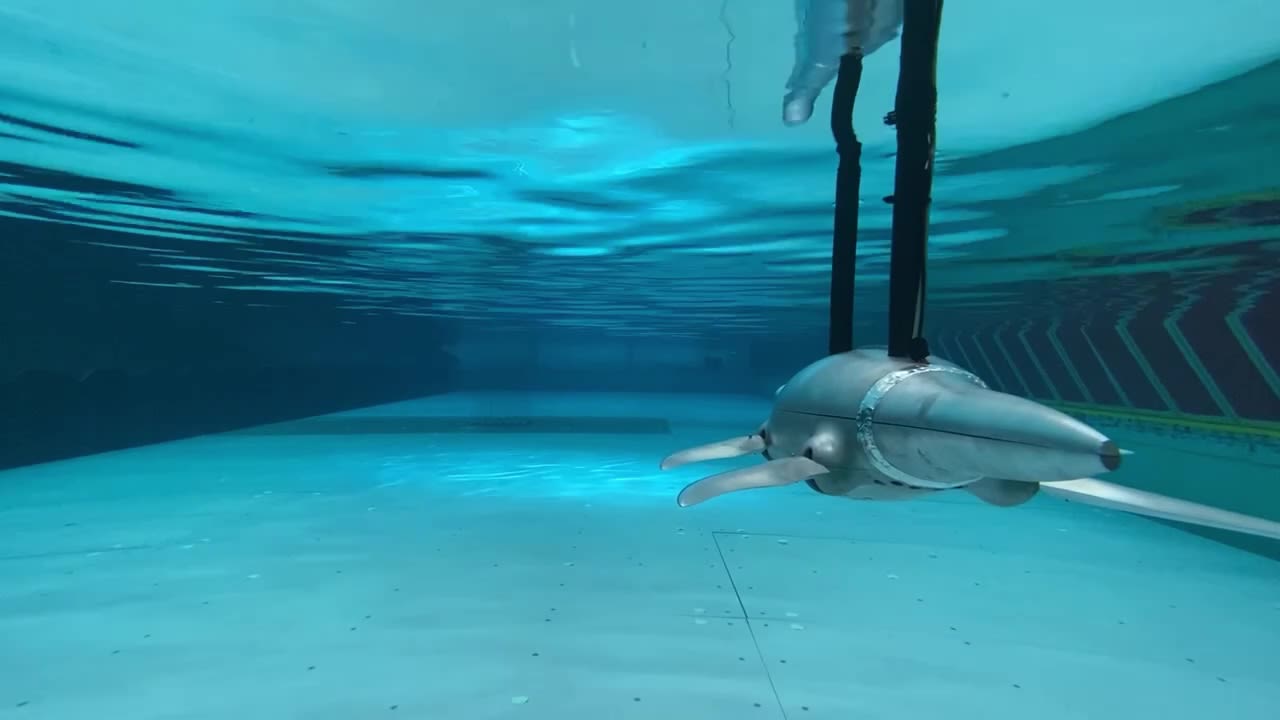
Luke Muscutt
Flippers working in tandem - Luke Muscutt
Luke Muscutt
Luke Muscutt

Jo Mieszkowski
Jo Mieszkowski
An aerospace engineering graduate, Dr Muscutt has always been inspired by nature - in particular evolution’s ability to “come up with designs that are close to optimum, at least within certain constraints.”
He dreamt of building a free-swimming, remote-controlled plesiosaur since before his PhD in biomechanics, which he completed at the University of Southampton in 2017.
Plesiosaurs used a tandem flipper propulsion system...This system is unique
His PhD findings settled a long-standing debate about how plesiosaurs used their flippers.
“We found that plesiosaurs used a tandem flipper propulsion system, meaning the four flippers work together to push them through water. This system is unique, because all other animals with flippers, like penguins and turtles, only use the front two for propulsion, and the back flippers or feet for steering.
“We studied this by building a tandem flapping flipper system mounted on a gantry, without a head or tail.”
The flipper system from Dr Muscutt’s PhD was a prototype of the fully formed, free-swimming robot that would later make the acquaintance of one of Britain’s best-loved documentary makers.
After his doctorate, Dr Muscutt began working at the Structural Dynamics group in Imperial’s Department of Mechanical Engineering, supporting researchers working on aeroplane engines and the structural effects of vibration.
Keen to continue bringing plesiosaurs to life in his spare time, he had trouble finding funding – until he met James Hogg, who had recently opened the Yorkshire Natural History Museum in Sheffield, and who agreed to support the work.

Jo Mieszkowski
Jo Mieszkowski
Thus began Dr Muscutt's journey to create his metre-long marine reptile, which is about the size of a newborn plesiosaur.
Pencil sketches became computer designs, which became physical realities thanks in part to the Structural Dynamics group’s 3D printer, whose day job includes printing components for jet engines.
There are quite a few things I've learned from working on jet engines that have gone straight into the design of the robot
The plesiosaur’s body plates, its ‘skin’, were printed by James at the Yorkshire Natural History Museum.
Dr Muscutt's work on jet engines at Imperial informed Flip’s design, too: “There are quite a few things I've learned from working on jet engines that have gone straight into the design of the robot plesiosaur, like the use of bolted flanges and split casings for bearings.”
With just one day to go until filming, the robot was ready for its moment of truth: a swimming lesson that would be broadcast to millions.


Luckily for Flip, Imperial is home to one of the UK’s largest state-of-the-art wave tanks. At 20 by 12 metres, with an adjustable seabed that grants depths up to 1.5 metres, the tank generates waves and currents so researchers can study their effects on natural and built environments.
The mammoth tank sits within our Department of Civil and Environmental Engineering’s Hydrodynamics Lab – a 3,000m2 facility that also houses a shallow-water tank and six flumes.

Dr Ioannis Karmpadakis conducts research in a water flume - Thomas Angus
Dr Ioannis Karmpadakis conducts research in a water flume - Thomas Angus
Research and teaching applications include everything from learning how best to install and maintain offshore wind farms, to how storms affect ships and how waves drive coastal erosion.
But when Sir David and his crew came to film, the only waves to be seen were gentle ripples from robotic flippers. The only thunder, the imagined roars from the robotic plesiosaur; the only lightning, the festive twinkling of stage lights. The only erosion, the erosion of nerves.
Dr Muscutt recalls: “Sir David immediately put me at ease - he really lives up to his reputation of being kind and modest. The Natural History Unit team were calm, professional, and organised, which meant I could focus on getting the robot working and showing this thing I had made to one of my heroes. It was a genuinely fun few hours.

Jo Mieszkowski
Jo Mieszkowski
“Like many people, I grew up watching Sir David. He inspired me as a naturalist, but also as an engineer, always adopting the latest camera technology and production methods. By the time I was born, he had already defined the nature of television broadcasting, particularly for natural history documentaries.”
So what's next for our famous plesiosaur?
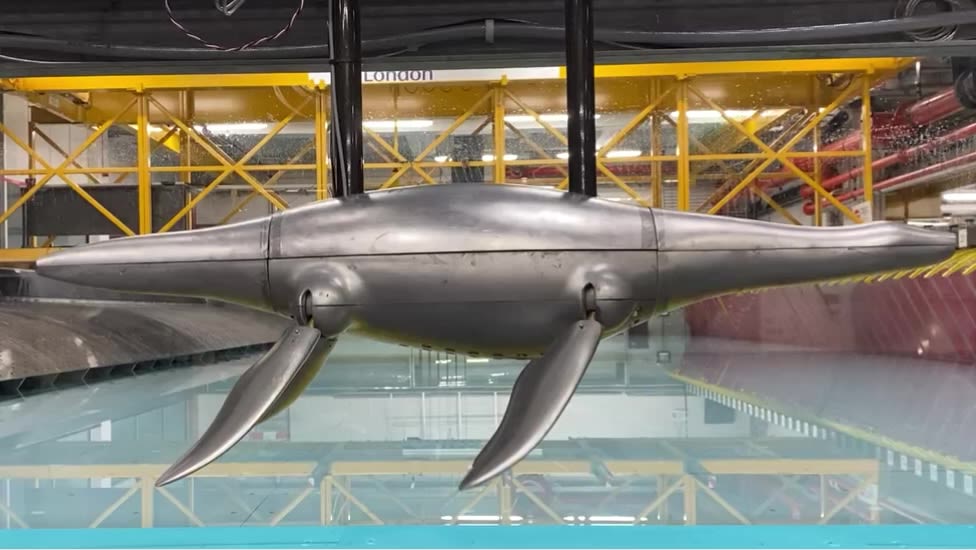
Flip will re-enter the tank to extend Dr Muscutt’s Southampton study, which will this time use more realistic flipper motions while accounting for the effects of the head and tail.
Dr Muscutt hopes to gather more evidence in support of his tandem flipper theory, with an eventual goal of being able to determine plesiosaurs’ swim speeds. He also wants to investigate how the head and neck are involved in steering and manoeuvrability.
These factors will be crucial in helping us to understand how the reptiles behaved and interacted with fellow Mesozoic ocean life.
Flip is the first in a line of robots that Dr Muscutt plans to design and build: the 3D printers are back in action, recreating the delicate internal bone structures of plesiosaur flippers for the next robot.
Dr Muscutt hopes that adding these bones to the robot’s flippers will help to emulate their flexibility more realistically: “I want to find out how their swim speed and behaviour affected their lifestyle, and to precisely pin down how they fitted in to the Mesozoic food web."
My experiments should provide more quantitative data – a piece of the ecological puzzle.
With most of the work done, re-printing the robot should be a breeze, he says.
“The joy of 3D printing is that the majority of the work lies in the computer-aided design.
"Once it’s perfect on the computer, you just print it, with no messing around later – other than the assembly and a bit of sanding and painting.”
Based on Flip’s success, Dr Muscutt has secured sponsorship from FormLabs through Creat3D, who recognise that he is pushing the envelope of this emerging technology.
As well as helping us to understand the prehistoric world, plesiosaurs and their modern robotic incarnations might teach us a thing or two about designing underwater vehicles.
By using flexible flippers instead of rigid propellers, for example, we might reduce disturbance and damage to marine life when conducting ecological and ocean research, and learn to manoeuvre search-and-rescue vehicles more easily and safely.
Dr Muscutt is currently raising funds to take the robot on a public engagement tour of UK museums to teach the public about evolution, robotics, and the marine environment. Flip will then be proudly displayed at the Yorkshire Natural History Museum in an interactive exhibit.
I love the idea of learning from nature...There’s something artistic – almost elegant – in that.
He concludes: “People have always looked to nature for inspiration - flying wings based on birds even appear in the Greek myths - but with modern materials, design techniques, and manufacturing processes, these adventurous ideas are becoming more feasible to implement.
"I love the idea of learning from nature, taking its designs and honing them to improve the world. There’s something artistic – almost elegant – in that.”
The discovery of the skull, and footage of Dr Muscutt’s robot in action, were featured in a special Sir David Attenborough programme on BBC One on New Year's Day 2024 - Attenborough and the Giant Sea Monster.
Imperial gave me the flexibility and freedom to pursue this...It’s great to be in an environment that fosters creativity and innovation
The project and resulting filming were a huge collaborative effort between the Structural Dynamics group, which allowed Dr Muscutt the flexibility to build the robot, the managers and technicians of the Hydrodynamics Lab, who facilitated testing and filming in the wave tank, as well as the press office and security team who made sure filming went swimmingly.
He says: “Imperial gave me the flexibility and freedom to pursue this. I am grateful for the opportunity to conduct blue-sky, explorative research, and for the colleagues who continue to support me along the way.
“It’s great to be part of an environment that fosters creativity and innovation, where people can see beyond the trees to future applications and are not bogged down with immediate outcomes.”

The Imperial colleagues who helped make the filming happen - Jo Mieszkowski
The Imperial colleagues who helped make the filming happen - Jo Mieszkowski

Jo Mieszkowski
Jo Mieszkowski

© BBC Studios
© BBC Studios

